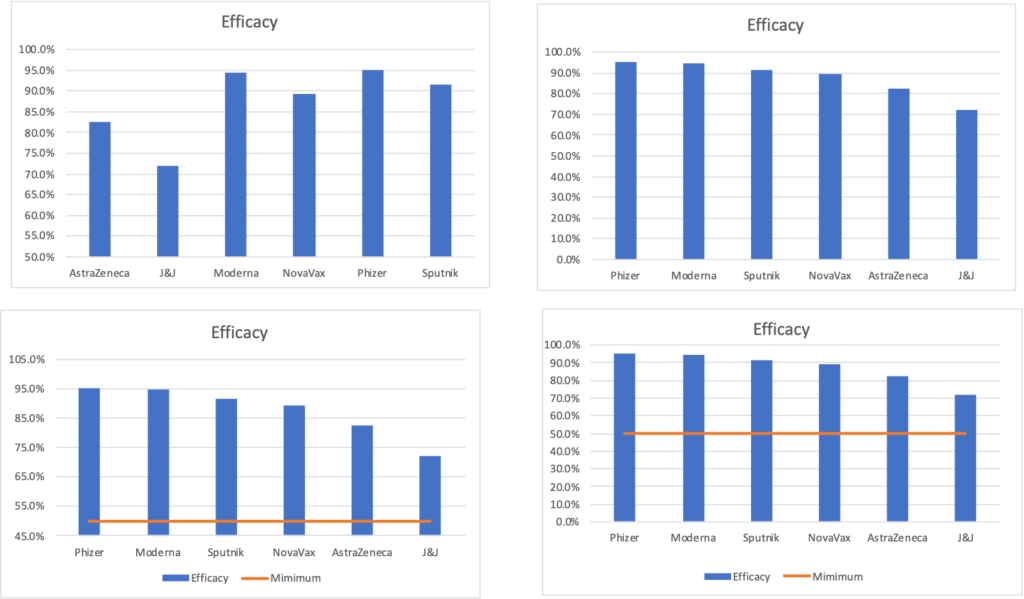The traditional definition of optics is the scientific study of sight or light. An alternative description relates to politics and refers to the perception of a situation. The political origin dates back to the Carter Administration when a Wall Street Journal editorial stated, “optics will not cure inflation.”
Optics and the management of perceptions are not limited to politics. In business, public relations and marketing create and maintains the right image for a company or brand. Johnson & Johnson’s handling of the Tylenol tampering in 1981 is still a case study in crisis management. The company took the unprecedented action of recalling all products on store shelves which created a lasting favorable impression.
Perception is Reality
Our point of view influences our interpretation of and response to a and event or situation. Despite my education in Economics, I have learned that the rational actor (homo-economicus) does not exist. There are only a few universal truths.
Our perceptions are our realities. People exposed to the same stimulus will act differently. Our personal experiences create the context through which we filter information, assign meaning, and develop assumptions. The brain responds to stimuli in milliseconds, completely bypassing our rational, analytic skills. We generically react spontaneously and reflexively to most events.
Recognizing this dynamic is foundational to understanding the importance and power of optics. How information is presented plays a vital role in the recipients’ reactions and the reality they create. Understanding how people respond to information is invaluable. Behavioral economists, quantitative psychologists, and marketers use this knowledge to create more effective public policies and marketing campaigns.
After decades of low 401(K) retirement plan enrollment rates, the program was changed in 2006. Rather than employees opting into the plan, new employees were automatically enrolled and opted-out if they did not want to participate. This seemingly simple change resulted in a significant increase in enrollments.
To lead, we need to influence and persuade others. Understanding optics is cortical to success. Often images, words, and visuals convey deep, significant meaning.
The Good
Oren Klaff, an investment banker, shares his insights on exploiting the brain’s cognitive processes in his book “Pitch Anything.” His technique relies on creating an emotional response or bond to grab a client’s attention. He recognized that financials and analytics alone do not close deals. For a billion-dollar private airport project, he created a storyline about creating a personal legacy.
Most of us will not be pitching mega-deals. However, understanding and analyzing our stakeholders’ needs, wants, desires, and interactions are critical to our success. We want to frame decisions on considerations relevant to their context. In other words, what’s in it for them (WIFem)?
When presenting information, we should consider the context:
- Who is the audience?
- What are their primary concerns? What motivates them? What are they afraid of?
- What is the best way to convey the information to that audience? What information should be conveyed? What is the appropriate level of detail?
- What might be “trigger” words for them? In other words, what is likely to provoke a strong positive or negative response.
The cost of managing one of our company’s strategic initiatives were ballooning. I was invited to discuss the program with the CIO and three senior vice presidents. Understanding the importance of this meeting, I carefully crafted my presentation. I selected a limited set of critical metrics and controlled the pace of the meeting. I successfully conveyed my perspective and gained their agreement in adopting my recommendations.
The Bad
Optics has a negative connotation for a good reason. The negative side of optics can range from wasteful activities to poor decision-making. We all have experienced the frustration of updating a report or presentation beyond the point of being productive.
When I wrote executive-level communications to the heads of Federal agencies, the memorandum would go through multiple drafts and levels of review. The process would take weeks and sometimes months. After the first few iterations, it felt like we were rearranging the deck chairs on the Titanic—we were simply changing words back and forth. We were trying to perfect the optics of the unpalatable message we were sending.
The presentation of information, events, and options can be manipulated to bias an outcome or buttress a position. For example, the scales of a graph can either exaggerate or hide differences, and significant digits can also covey a false sense of accuracy.
I have been fascinated by the pandemic. Currently, there are six vaccines in clinical trials or use. All meet the 50% effectiveness rate set by the Food and Drug Administration. The reported efficacy rates of the COVID vaccines are:
- Phizer/BioNTech: 95%
- Moderna: 94.5%
- Sputnki V: 91.6%
- NovaVax: 89.3%
- AstraZenca/Oxford: 82.4%
- Johnson & Johnson: 72% in the United States
The following graphs contain the same data. But I have manipulated the presentation. Do they convey the same message? Do you draw the same conclusions?

It is common practice to present three recommendations to a problem. The intent is to provide decision-makers with a range of reasonable options. When done objectively, this improves outcomes because our brains can compare a limited set of choices. However, it is also possible to present the options to favor a specific outcome.
The theory of the agenda setter demonstrates that outcomes can be manipulated based on which options are presented and how they are ordered. If someone prefers chocolate over vanilla, and vanilla over strawberry, it is possible to offer a series of choices where strawberry is selected.
The Ugly
In a few regrettable situations, optics and the poor presentation of information have resulted in tragic outcomes. Edward Tufte is a statistician and political economist at Yale University whose work focuses on presenting information. He served on commissions investigating the Challenger and Columbia shuttle disasters. In both accidents, poor and misleading presentation of information contributed to the wrong decision.
The fear of bad optics contributed to the operational failure when a violent mob overran the United States Capitol. The former Chief of the Capitol Police, Steven Sund, stated that his request for National Guard support was rejected by the Sergeants of Arms of the House and Senate because of the “optics” of declaring an emergency ahead of the planned demonstrations.
The phrase “words have consequences” was used by Albert Marrin to describe why Israel launched a preemptive attack on Egypt in the 1967, Six-Day War. Egypt’s bellicose rhetoric and threatening actions resulted in a humiliating and devastating military defeat.
The words we use, the data and information we present, the images we display are critical. They convey more profound messages than what is apparent. We can use our communication and knowledge of optics for both good and bad; it is our choice.
© 2021, Alan Zucker; Project Management Essentials, LLC
To learn more about our training and consulting services, or to subscribe to our Newsletter, visit our website: http://www.pmessentials.co/.
Related Project Management Essentials articles:

